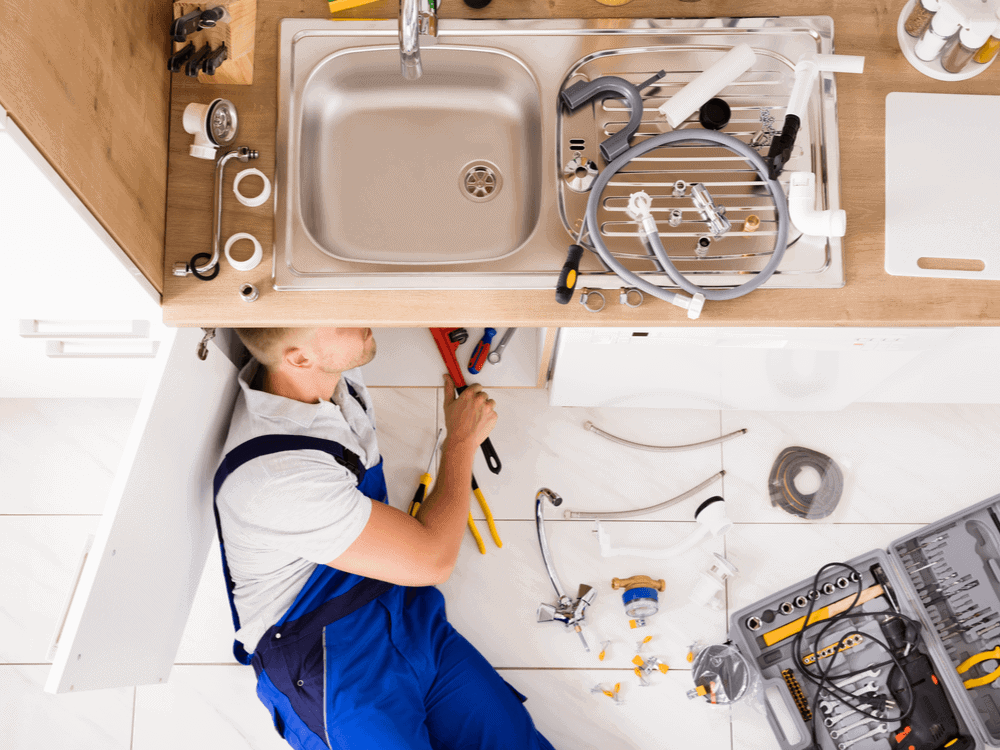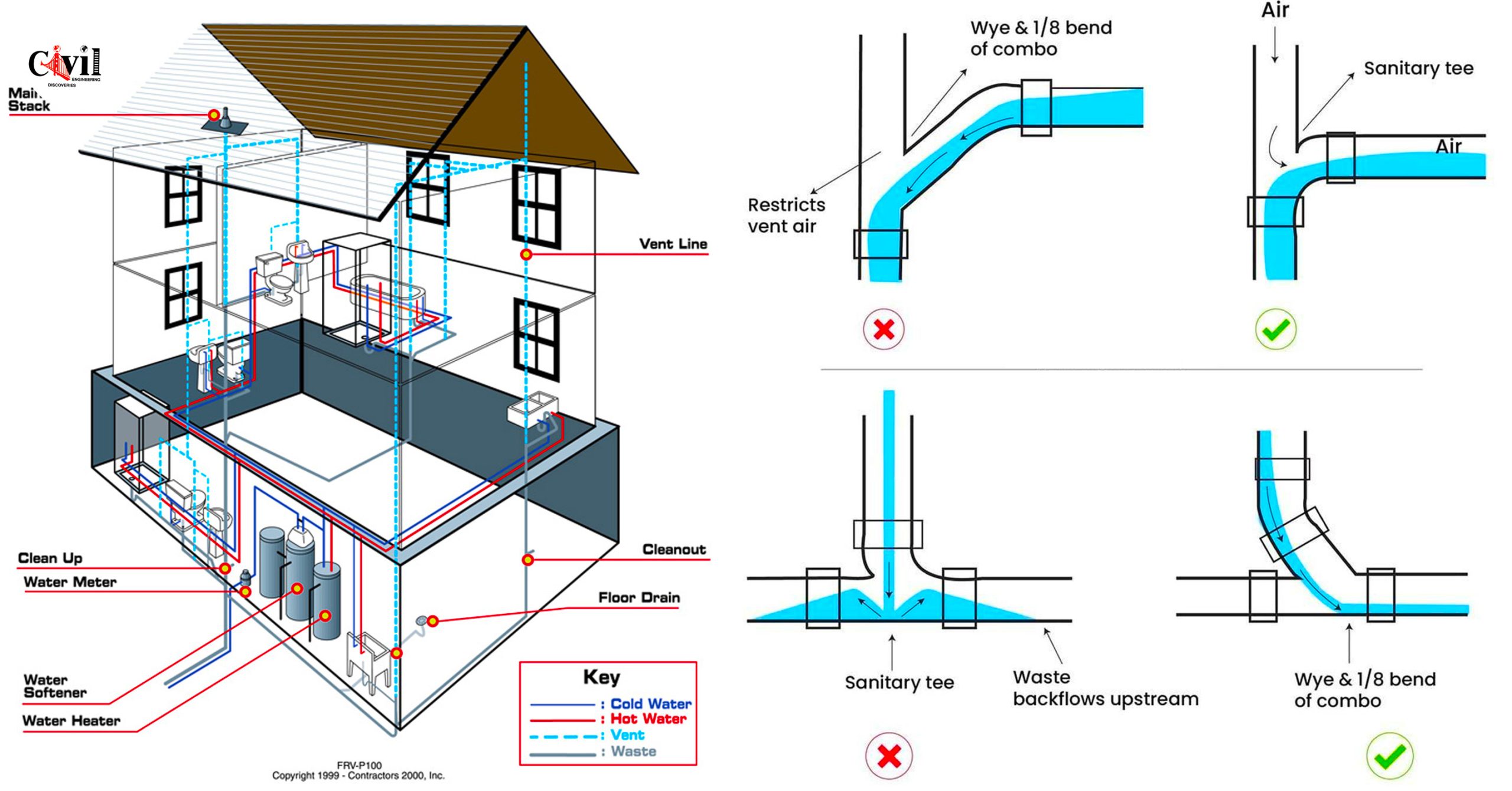What Your House's Plumbing System Works: Anatomy
What Your House's Plumbing System Works: Anatomy
Blog Article
The writer is making a few good annotation on the subject of Understanding Your Home's Plumbing Anatomy in general in this post underneath.

Understanding how your home's plumbing system functions is important for every home owner. From delivering tidy water for alcohol consumption, food preparation, and bathing to safely getting rid of wastewater, a properly maintained plumbing system is important for your household's health and convenience. In this comprehensive guide, we'll explore the complex network that comprises your home's pipes and deal ideas on maintenance, upgrades, and dealing with common concerns.
Intro
Your home's plumbing system is greater than just a network of pipes; it's an intricate system that guarantees you have accessibility to clean water and effective wastewater removal. Knowing its parts and how they collaborate can help you prevent expensive repairs and guarantee whatever runs smoothly.
Fundamental Elements of a Plumbing System
Pipelines and Tubing
At the heart of your pipes system are the pipes and tubes that bring water throughout your home. These can be made from different products such as copper, PVC, or PEX, each with its advantages in regards to sturdiness and cost-effectiveness.
Components: Sinks, Toilets, Showers, etc.
Fixtures like sinks, commodes, showers, and tubs are where water is utilized in your home. Recognizing how these components attach to the plumbing system aids in diagnosing problems and intending upgrades.
Valves and Shut-off Factors
Shutoffs regulate the flow of water in your pipes system. Shut-off shutoffs are critical during emergencies or when you require to make repair services, allowing you to separate parts of the system without interfering with water circulation to the entire home.
Water Supply System
Main Water Line
The major water line connects your home to the community supply of water or an exclusive well. It's where water enters your home and is dispersed to numerous fixtures.
Water Meter and Stress Regulatory Authority
The water meter actions your water usage, while a stress regulatory authority guarantees that water flows at a safe stress throughout your home's pipes system, protecting against damages to pipelines and components.
Cold Water vs. Warm water Lines
Recognizing the distinction between cold water lines, which supply water directly from the main, and warm water lines, which bring heated water from the water heater, aids in repairing and planning for upgrades.
Water drainage System
Drain Pipes Water Lines and Traps
Drain pipelines bring wastewater away from sinks, showers, and toilets to the drain or septic tank. Traps protect against drain gases from entering your home and also trap debris that could cause obstructions.
Air flow Pipelines
Ventilation pipes permit air right into the water drainage system, protecting against suction that can reduce drainage and cause catches to vacant. Appropriate ventilation is vital for keeping the integrity of your plumbing system.
Importance of Appropriate Drain
Guaranteeing proper water drainage stops backups and water damages. On a regular basis cleaning drains pipes and preserving catches can prevent expensive fixings and extend the life of your plumbing system.
Water Furnace
Kinds Of Water Heaters
Water heaters can be tankless or typical tank-style. Tankless heating units heat water as needed, while storage tanks save heated water for prompt use.
Just How Water Heaters Attach to the Plumbing System
Understanding just how hot water heater connect to both the cold water supply and warm water distribution lines assists in detecting issues like not enough hot water or leaks.
Upkeep Tips for Water Heaters
Routinely purging your water heater to eliminate debris, examining the temperature level setups, and inspecting for leaks can expand its life expectancy and boost energy performance.
Typical Pipes Problems
Leakages and Their Causes
Leakages can happen as a result of maturing pipes, loose installations, or high water pressure. Resolving leaks without delay avoids water damages and mold development.
Clogs and Obstructions
Clogs in drains and bathrooms are commonly brought on by purging non-flushable products or a build-up of oil and hair. Using drain screens and bearing in mind what drops your drains pipes can prevent clogs.
Indications of Pipes Troubles to Expect
Low tide pressure, slow-moving drains pipes, foul odors, or uncommonly high water costs are indicators of potential plumbing problems that ought to be dealt with immediately.
Pipes Upkeep Tips
Normal Examinations and Checks
Set up annual pipes inspections to catch issues early. Seek signs of leaks, rust, or mineral build-up in faucets and showerheads.
DIY Maintenance Tasks
Basic jobs like cleansing tap aerators, checking for bathroom leakages making use of color tablets, or insulating exposed pipelines in cool climates can prevent major pipes concerns.
When to Call a Specialist Plumber
Know when a plumbing problem needs expert experience. Trying complicated fixings without correct expertise can cause even more damages and greater fixing prices.
Updating Your Pipes System
Factors for Updating
Updating to water-efficient components or replacing old pipelines can boost water high quality, minimize water costs, and boost the worth of your home.
Modern Pipes Technologies and Their Advantages
Discover modern technologies like wise leakage detectors, water-saving bathrooms, and energy-efficient water heaters that can conserve cash and decrease environmental influence.
Cost Considerations and ROI
Compute the in advance costs versus lasting savings when considering pipes upgrades. Numerous upgrades pay for themselves with decreased utility costs and less repair services.
Ecological Effect and Preservation
Water-Saving Components and Home Appliances
Setting up low-flow faucets, showerheads, and toilets can significantly minimize water usage without sacrificing efficiency.
Tips for Lowering Water Use
Easy practices like fixing leakages immediately, taking shorter showers, and running full tons of laundry and recipes can preserve water and lower your utility costs.
Eco-Friendly Plumbing Options
Take into consideration lasting plumbing materials like bamboo for floor covering, which is durable and environment-friendly, or recycled glass for counter tops.
Emergency Readiness
Steps to Take During a Pipes Emergency situation
Know where your shut-off shutoffs are located and how to switch off the supply of water in case of a burst pipe or significant leak.
Importance of Having Emergency Situation Get In Touches With Handy
Maintain get in touch with information for neighborhood plumbings or emergency situation services easily offered for quick action during a pipes crisis.
Do It Yourself Emergency Fixes (When Appropriate).
Short-lived fixes like utilizing air duct tape to patch a dripping pipe or putting a container under a trickling faucet can reduce damages till an expert plumbing professional arrives.
Final thought.
Recognizing the anatomy of your home's plumbing system equips you to maintain it successfully, conserving time and money on repair services. By adhering to routine upkeep regimens and staying informed concerning modern plumbing modern technologies, you can ensure your pipes system operates effectively for many years ahead.
HOW YOUR PLUMBING SYSTEM WORKS
Which Pipes Do What?
Blue lines = fresh water supply entering the building
Red lines = hot water supply entering the building
Grey lines = pipes carrying waste away from the building and venting pipes carrying gases away from the building (through the roof)
YOUR MAIN PLUMBING SYSTEMS
There are two main plumbing systems that support your home s basic plumbing needs one that brings clean water into your home, and one that sends dirty water away from your home. Connected to the toilet, bath, shower, and other faucets in your home, these two systems keep your water flowing in the right directions.
ACCESSING FRESH WATER
Fresh and clean water is brought into your home through the main water supply line . Filtered through one pipe, this water is pressured to flow into the various fixtures in your home at any given time.
This water can be sourced from a well located on your property, a pond or river (mostly cottages), or, as in most cases, from the city s municipal water treatment centre. However, it is important to note that water that is untreated, such as the water siphoned from ponds or rivers, may not be safe to drink. Personal water supplies always need to be treated for hardness and contaminants before consumed.
MUNICIPAL WATER SUPPLIES
Improve taste and odour
Remove sediment
Eliminate hardness
Reduce chlorine
COLD WATER SUPPLY VS. HOT WATER SUPPLY
Cold water flows into your home or building through the service line, which then distributes hot or cold water to your fixtures. This line is most commonly run through a central column that runs floor to floor. Hot water runs in short and straight pipes as the longer the pipeline, the more heat that will be lost in the transfer. Having shorter pipes also allows residents to access hot water more quickly.
WASTE WATER SYSTEM
Your wastewater system is divided into two parts pipes that send wastewater away from your home and venting pipes that send sewer gas away from your home. Sewage water travels through pipes that flush the water and waste towards local sewers that are operated and managed by your city or town. Most sewer systems rely on gravity to move the wastewater to where it needs to go.
The further away from your toilet or sink, the larger wastewater pipes become. This allows for waste to be disposed of from various parts of your home or business at once without pipe blockages. The angle and flow of these pipes are also essential for keeping your waste pipes clear of build up.
https://harrisplumbing.ca/how-your-home-plumbing-system-works/

HOW YOUR PLUMBING SYSTEM WORKS
Which Pipes Do What?
YOUR MAIN PLUMBING SYSTEMS
There are two main plumbing systems that support your home s basic plumbing needs one that brings clean water into your home, and one that sends dirty water away from your home. Connected to the toilet, bath, shower, and other faucets in your home, these two systems keep your water flowing in the right directions.
ACCESSING FRESH WATER
Fresh and clean water is brought into your home through the main water supply line . Filtered through one pipe, this water is pressured to flow into the various fixtures in your home at any given time.
This water can be sourced from a well located on your property, a pond or river (mostly cottages), or, as in most cases, from the city s municipal water treatment centre. However, it is important to note that water that is untreated, such as the water siphoned from ponds or rivers, may not be safe to drink. Personal water supplies always need to be treated for hardness and contaminants before consumed.
MUNICIPAL WATER SUPPLIES
COLD WATER SUPPLY VS. HOT WATER SUPPLY
Cold water flows into your home or building through the service line, which then distributes hot or cold water to your fixtures. This line is most commonly run through a central column that runs floor to floor. Hot water runs in short and straight pipes as the longer the pipeline, the more heat that will be lost in the transfer. Having shorter pipes also allows residents to access hot water more quickly.
WASTE WATER SYSTEM
Your wastewater system is divided into two parts pipes that send wastewater away from your home and venting pipes that send sewer gas away from your home. Sewage water travels through pipes that flush the water and waste towards local sewers that are operated and managed by your city or town. Most sewer systems rely on gravity to move the wastewater to where it needs to go.
The further away from your toilet or sink, the larger wastewater pipes become. This allows for waste to be disposed of from various parts of your home or business at once without pipe blockages. The angle and flow of these pipes are also essential for keeping your waste pipes clear of build up.
https://harrisplumbing.ca/how-your-home-plumbing-system-works/
We are very serious about The Inner Workings of Your Home's Plumbing and I'm hoping you enjoyed our article. Sharing is nice. One never knows, you may be doing someone a favor. Thanks so much for your time invested reading it.
Call Today Report this page